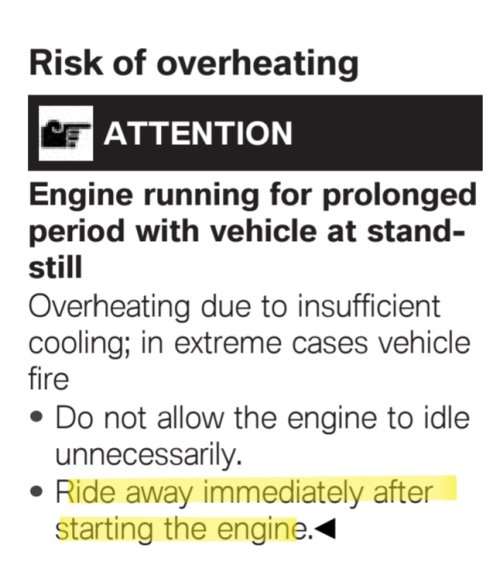sharpestjim
Member
Three days ago, I took delivery of a new 2023 R1250RS. This machine is my dream bike. Really, it is. It's the sixteenth (I believe) motorcycle that I have owned over the past forty-nine years and my ninth new one. I knew that this thing was infinitely more technically advanced than the Yamaha RD400 that I've owned since 2001. I accept that and it's part of the reason why I chose this particular bike. I'm 63-years-old. I remember the very first time that I saw an electronic calculator circa 1973. It only did basic math (addition, subtraction, multiplication, division). It didn't even have a floating decimal and it sold for $30. In 1973, thirty dollars was about what a family of four spent at the grocery store in one week. I remember playing Pong in a WT Grant store at around that same time. So, granted, I'm not the most tech-savvy person in the world. But I can generally figure things out. I'd consider myself probably a 4 on a scale of 1-10 when it comes to tech stuff. I assumed, and have accepted the fact, that it would take me some time to get used to the technological wizardry of the R1250RS.
But I have to say...the owner's manual is, in my opinion, an outright mess. Again, I'm not a genius. But neither am I a complete moron. I spent two hours looking over the TFT section of the manual last evening. Is it just me??? I came away more confused than I was on Saturday. I just want to ride. I am not interested in launching nuclear missiles (well, maybe if I owned some). Honestly, I can't figure out half of the stuff that I read. I love the fact that the bike can be tweaked to suit my riding style and habits. I don't believe that it is the complexity of the thing, per se, that has me befuddled. I believe it to be the manner in which the manual is written. I grew up - and have spent most of my life - on riceburners. I'm used to the manner in which Japanese owner's manuals are written. They were terrible back in the day. Then again, in the 70's and 80's, complexity and electronic gadgetry weren't much of a factor.
I'm wondering how - or even IF - I'll ever figure this thing out. I found several good YouTube videos on "Keyless Ride". I found the manual to be totally useless when it came to that. Here's something else about the manual: There is nothing in the index concerning cruise control. I found it in the manual, quite by chance. But isn't cruise control sort of a basic function? Why is it not referenced in the index? Heck, the last time that I had cruise control on a bike, it was one of those contraptions that clamped around your throttle tube and pinched onto the throttle cable where it exited the right-hand handlebar control. That was on my 1983 CB1100F.
OK. That's my rant. I absolutely love this bike, don't get me wrong. But I'm half afraid to RIDE the darned thing.
But I have to say...the owner's manual is, in my opinion, an outright mess. Again, I'm not a genius. But neither am I a complete moron. I spent two hours looking over the TFT section of the manual last evening. Is it just me??? I came away more confused than I was on Saturday. I just want to ride. I am not interested in launching nuclear missiles (well, maybe if I owned some). Honestly, I can't figure out half of the stuff that I read. I love the fact that the bike can be tweaked to suit my riding style and habits. I don't believe that it is the complexity of the thing, per se, that has me befuddled. I believe it to be the manner in which the manual is written. I grew up - and have spent most of my life - on riceburners. I'm used to the manner in which Japanese owner's manuals are written. They were terrible back in the day. Then again, in the 70's and 80's, complexity and electronic gadgetry weren't much of a factor.
I'm wondering how - or even IF - I'll ever figure this thing out. I found several good YouTube videos on "Keyless Ride". I found the manual to be totally useless when it came to that. Here's something else about the manual: There is nothing in the index concerning cruise control. I found it in the manual, quite by chance. But isn't cruise control sort of a basic function? Why is it not referenced in the index? Heck, the last time that I had cruise control on a bike, it was one of those contraptions that clamped around your throttle tube and pinched onto the throttle cable where it exited the right-hand handlebar control. That was on my 1983 CB1100F.
OK. That's my rant. I absolutely love this bike, don't get me wrong. But I'm half afraid to RIDE the darned thing.




